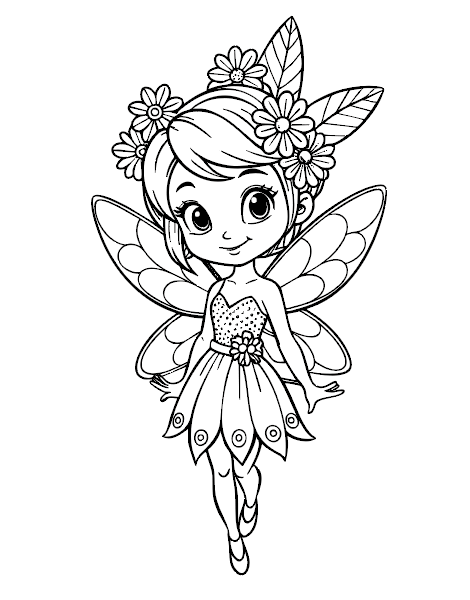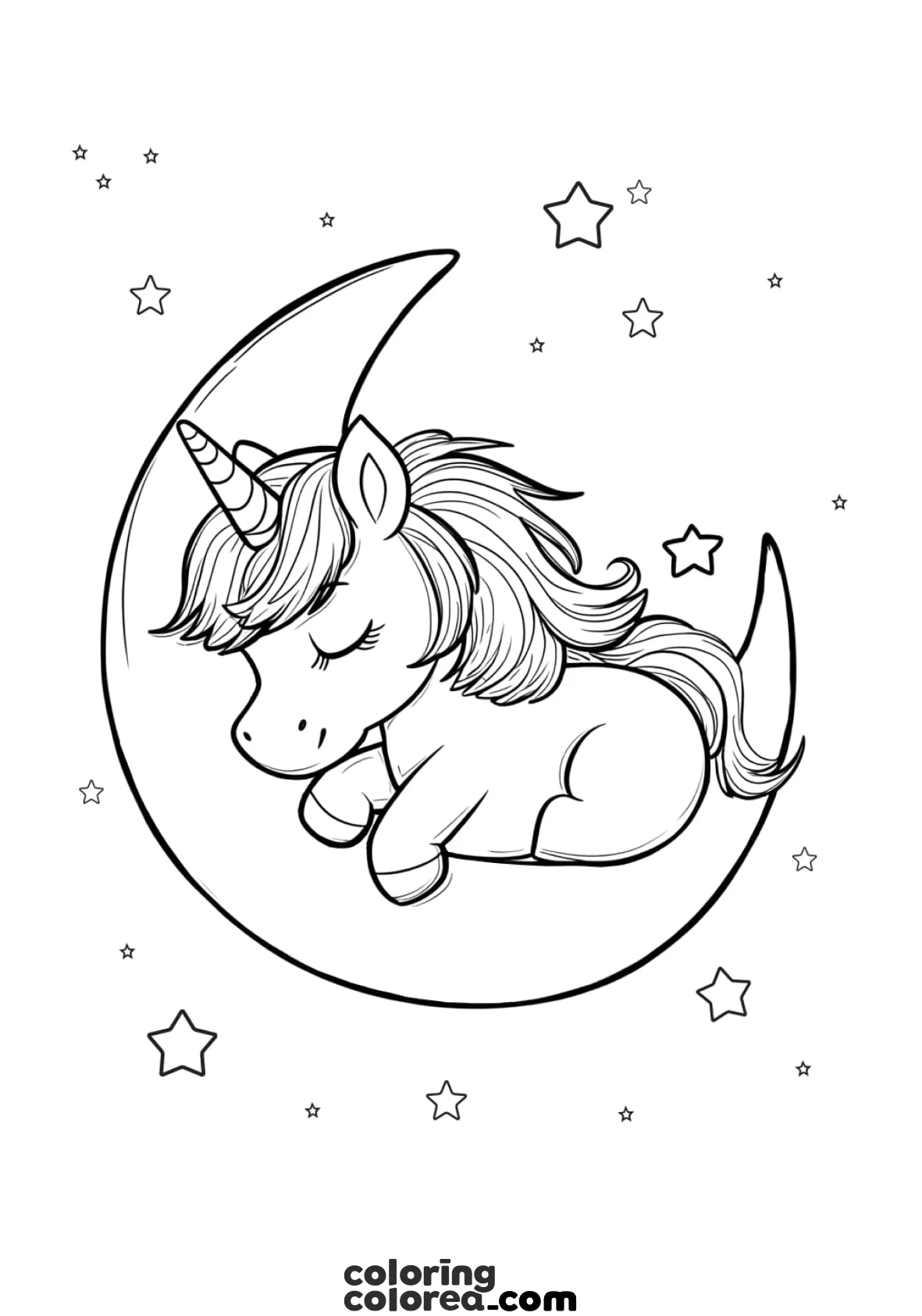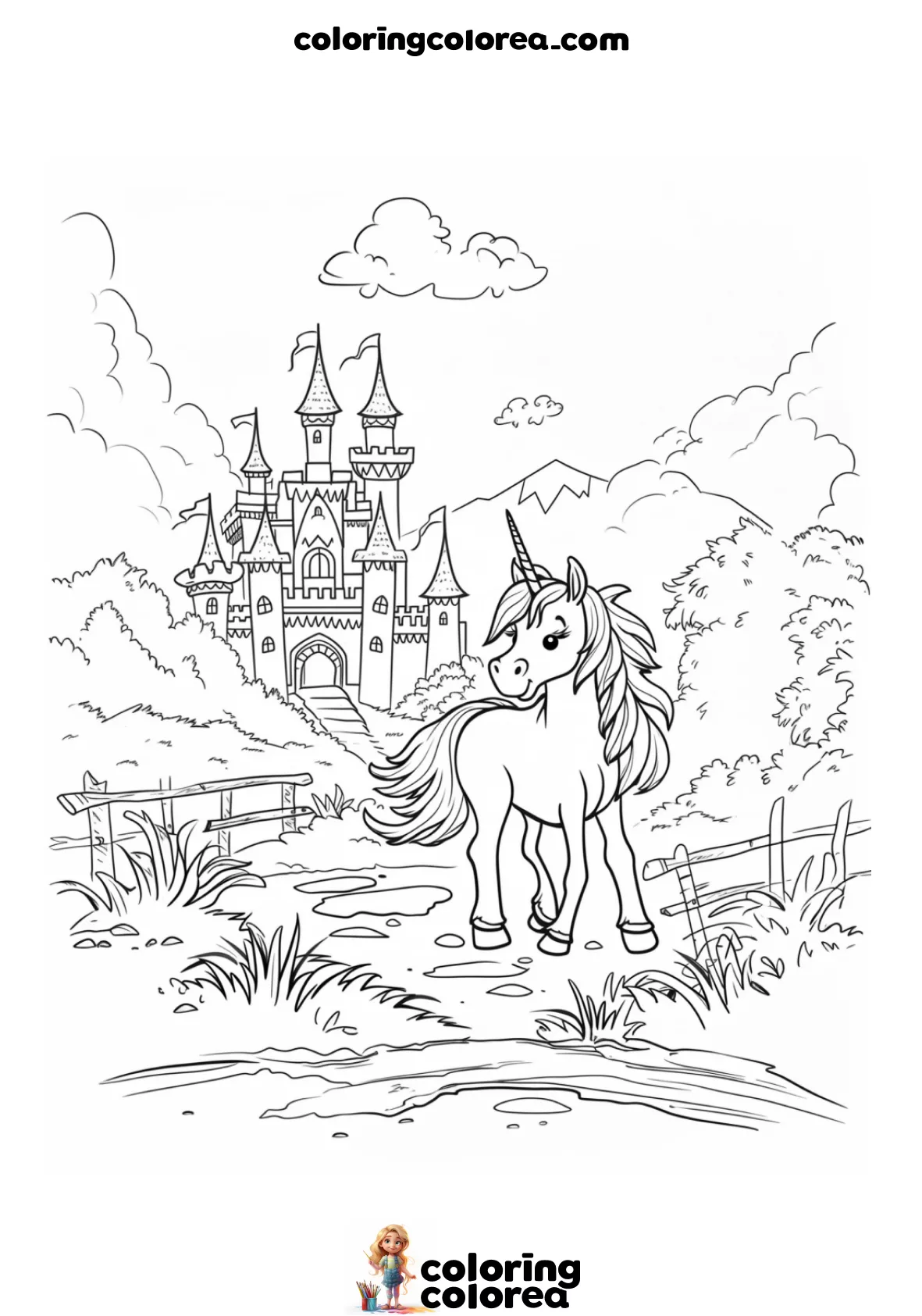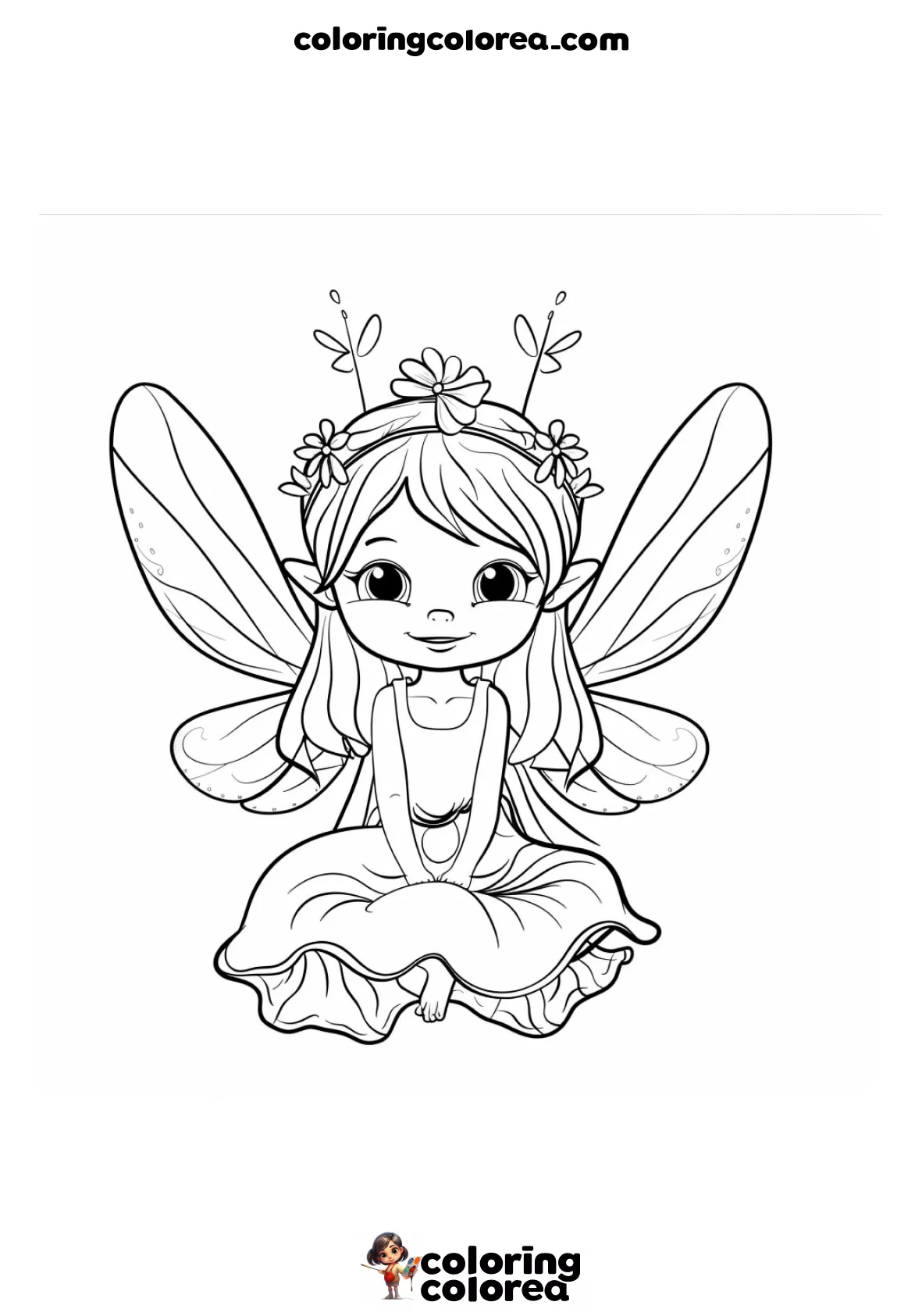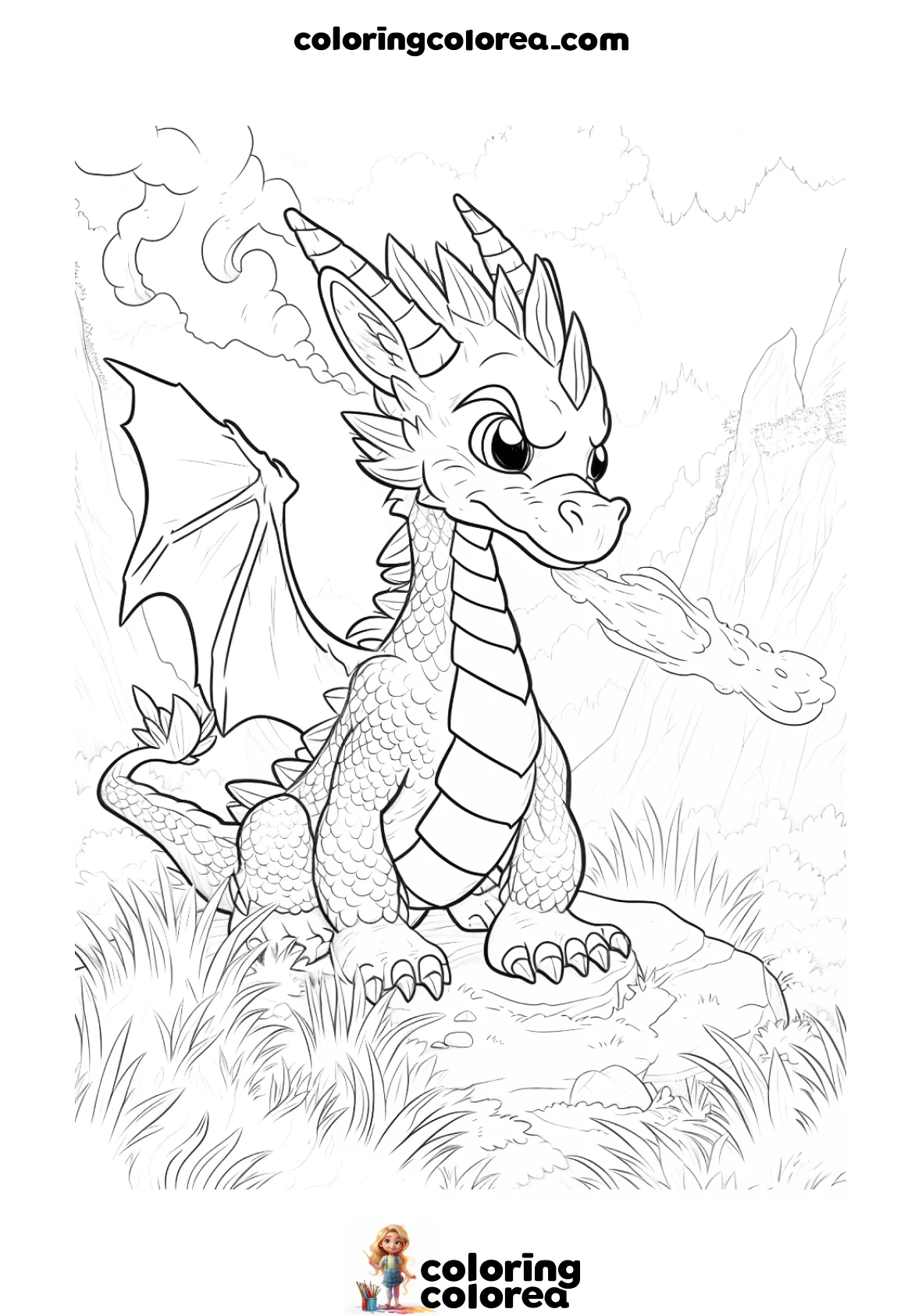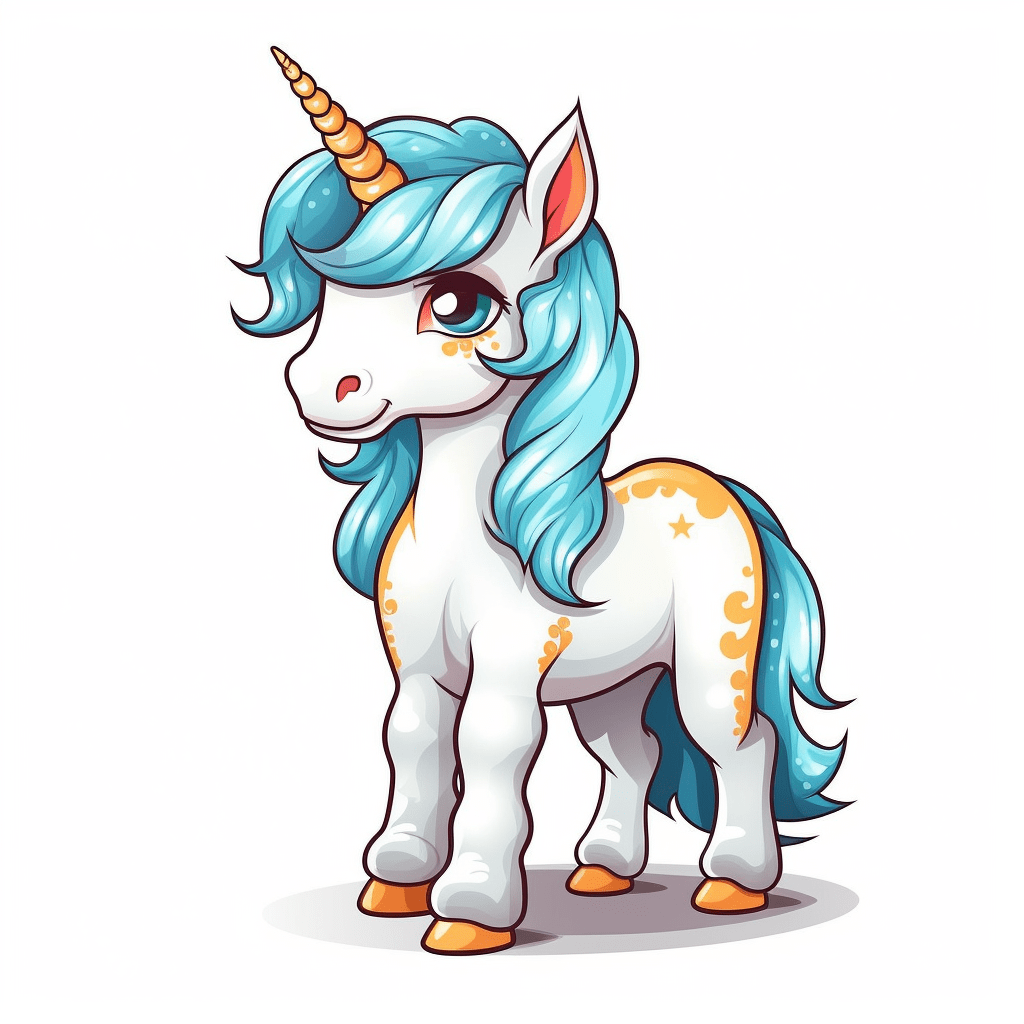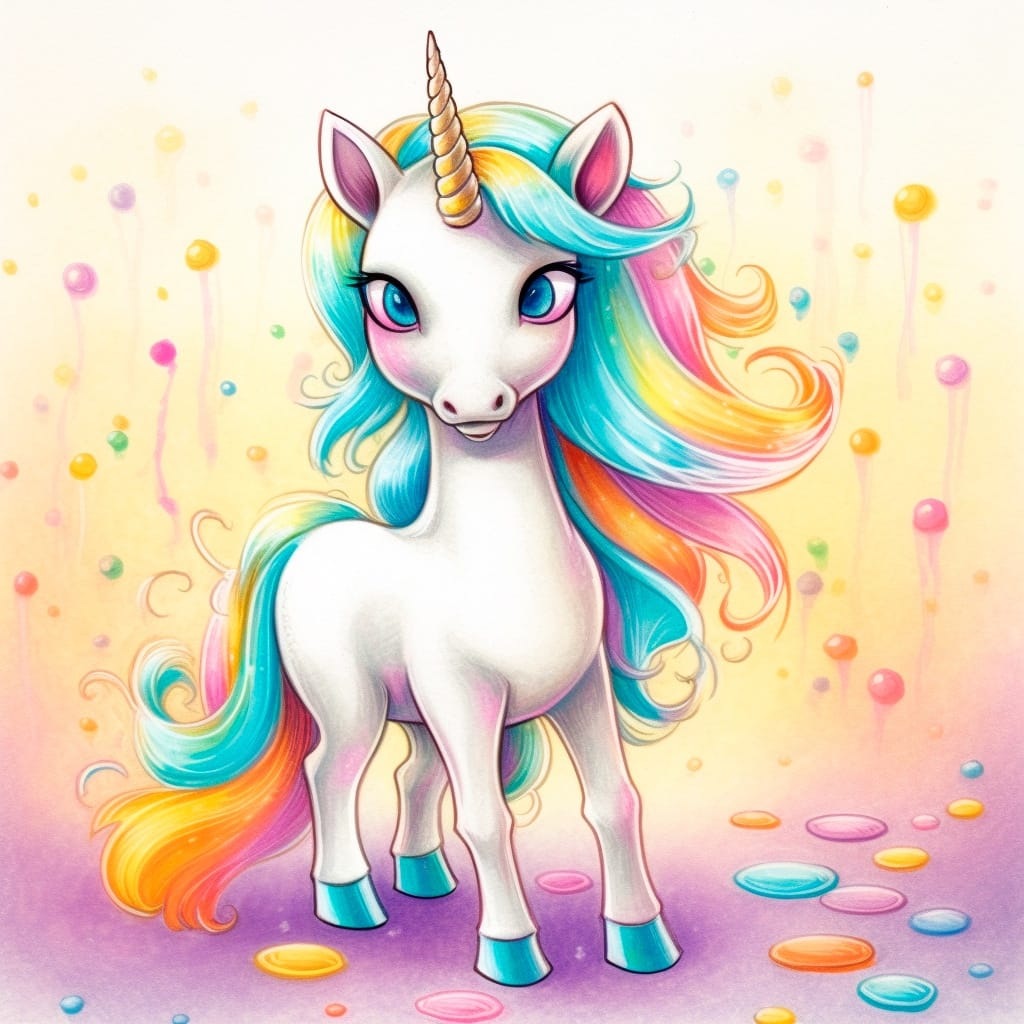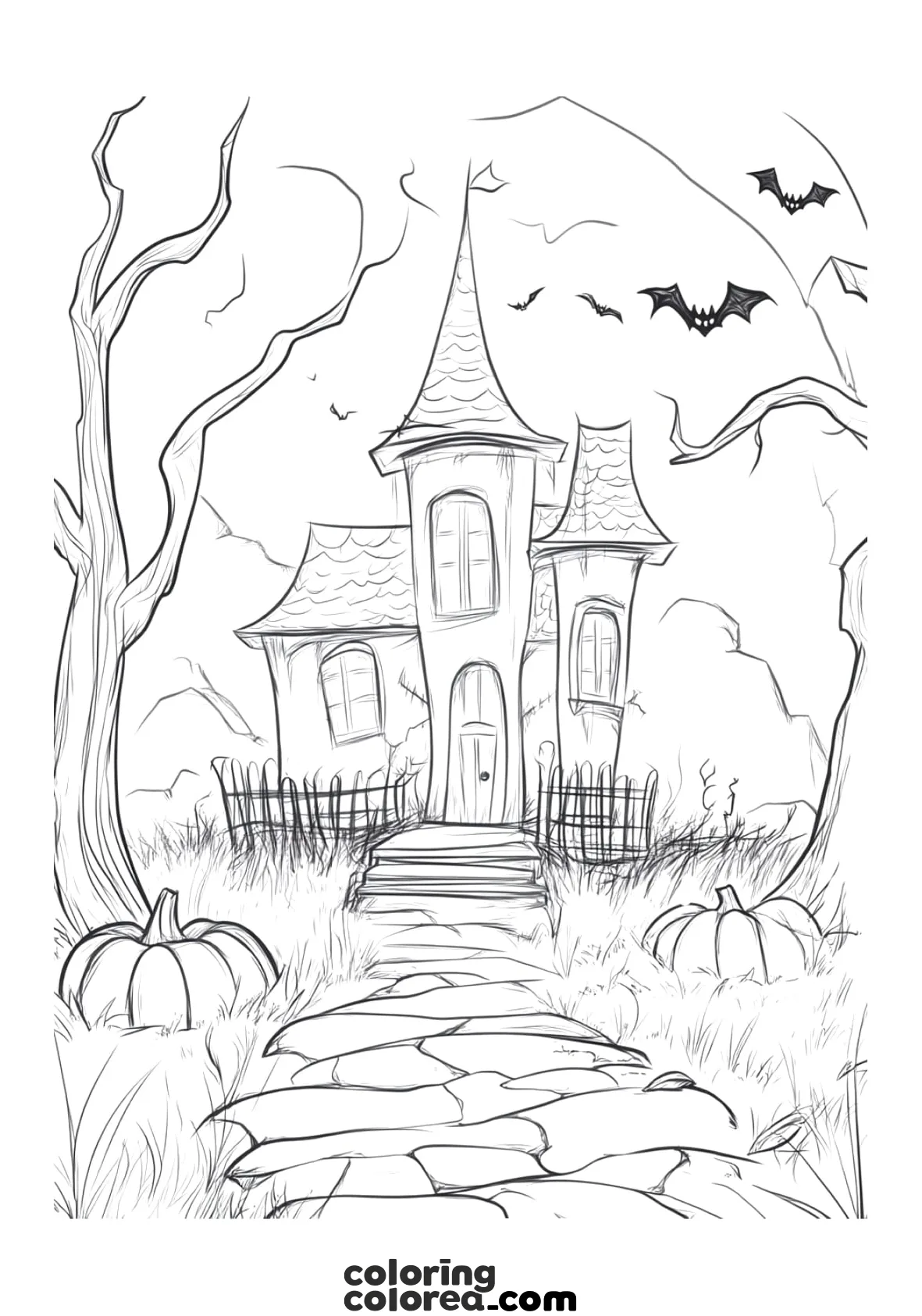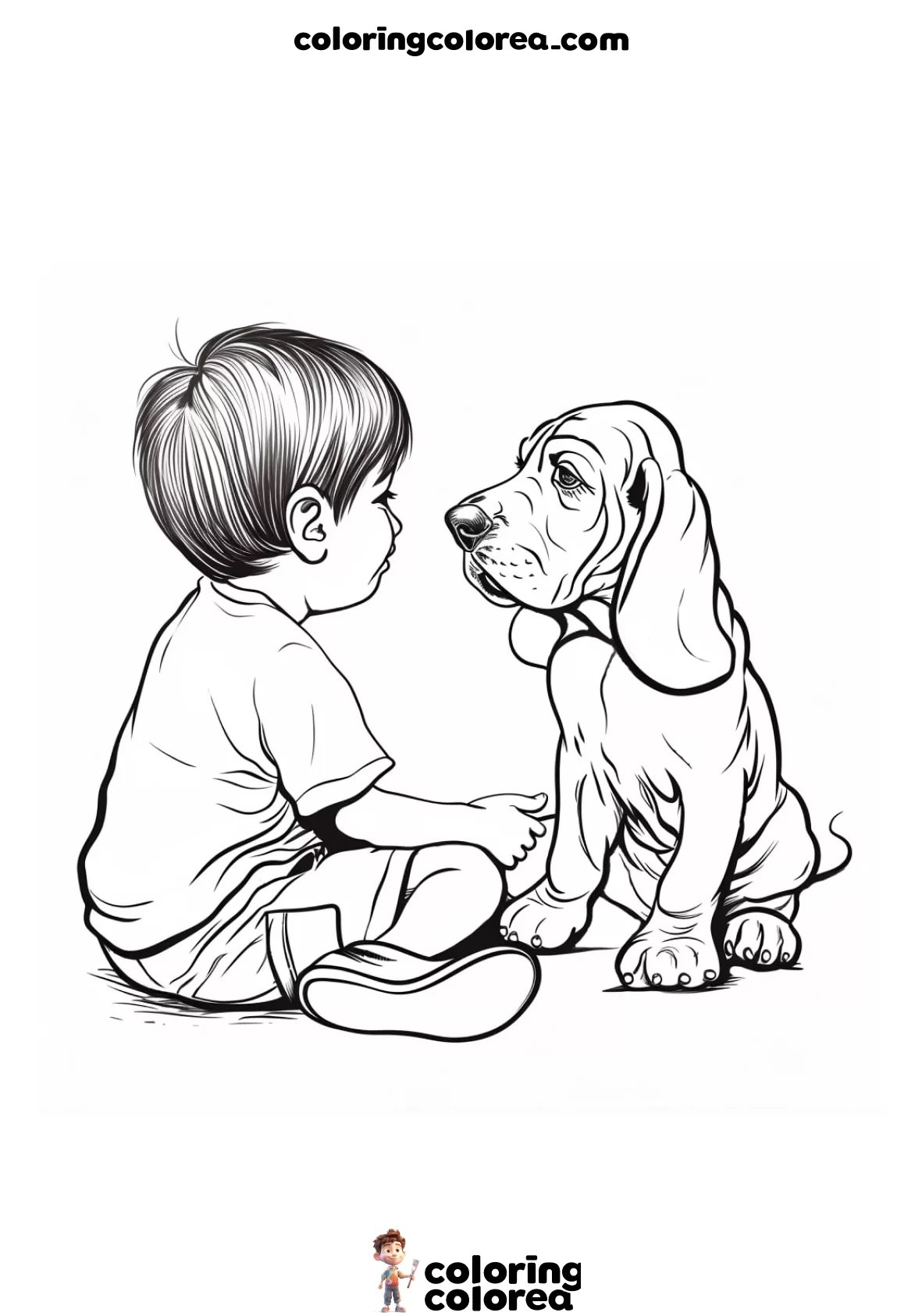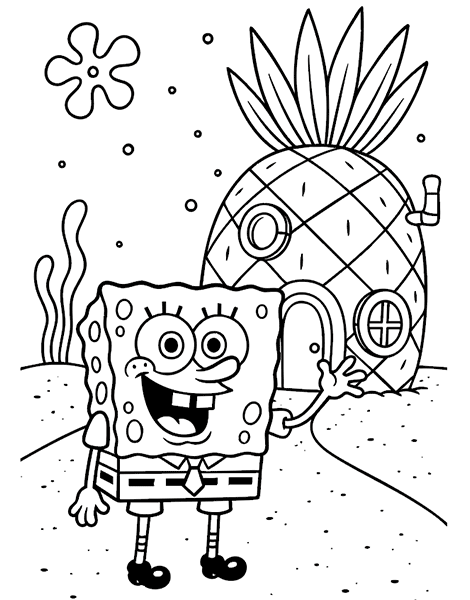Tips and Ideas for Coloring the Unicorn
This drawing offers some fun and creative challenges. The shapes are rounded, which is perfect for experimenting with smooth color transitions, gentle shading, and gradients. The guitar, for example, can really stand out if you use a warm color like brown or orange, adding darker details to the neck and sound hole. The trick is to make the strings look thin and shiny without overshadowing the body of the instrument.
The unicorn itself is a chance to play with any color combination you like: its mane could be soft pastel shades, or bright, bold rainbow colors. Kids can experiment with how colors express feelings—a blue mane might give a sense of calm, while pinks and oranges could show joy and energy.
The birds are another opportunity for creative color choices: you can color them all the same, or make each one different, as if every bird is a unique note or voice in the song.
The floral background is great for practicing small details—petals, leaves, stems. It’s a perfect way to work on careful coloring, and to choose a palette that lets the unicorn stand out. For example, using soft greens or pastel flowers keeps the background interesting without stealing the spotlight from the main character.

